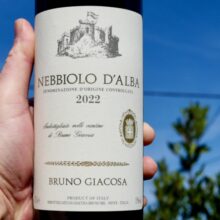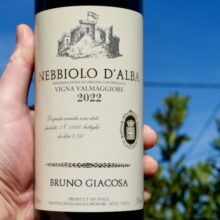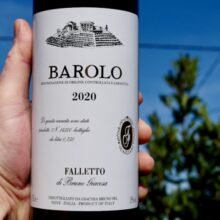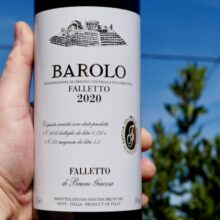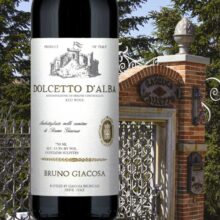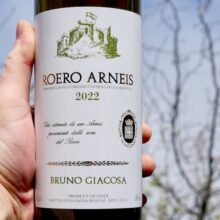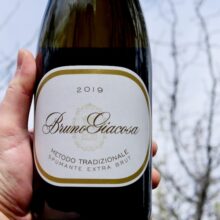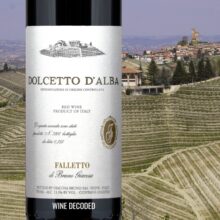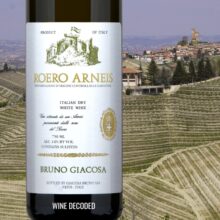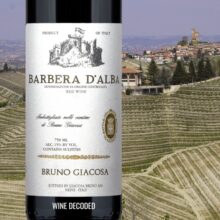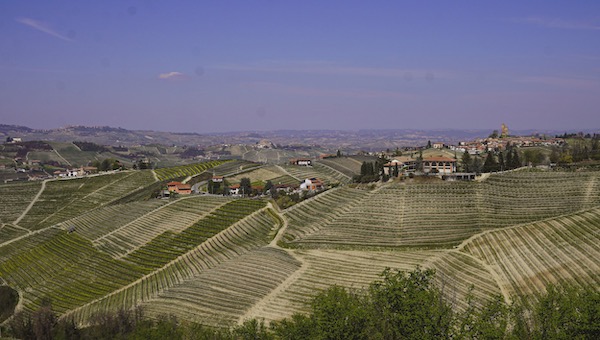
Winery
Bruno Giacosa
Born in 1929 in Neive where the winery remains, Bruno Giacosa spent his formative teenage years working with his father Carlo as a ‘commerciante’ or grape broker. This very important but often overlooked part of Giacosa’s history is perhaps the key to understanding his unrivalled ability to select fruit, even that which he hadn’t grown himself.
The family’s income at that time revolved solely around the ability to sell fruit to winemakers, and taking any fruit to vinify themselves would have been a conflict of interest. In fact, his father so vehemently opposed the young Bruno’s intention to bottle his own wine in the early 1960’s, that he had to do so without the blessing of the family. The first vintage wearing the label Bruno Giacosa was 1961, a single Barbaresco bottling from a mixture of vineyards as was custom at the time. It was the prominent wine author and critic Luigi Veronelli who at the time was crusading for Piedmont’s adoption of the French ‘cru’ classification of vineyard that convinced Giacosa to bottle and (importantly) label single vineyard wines soon after his first vintage. The first labelled cru bottling was the 1964 Barbaresco Vigna Santo Stefano, but it is possible that even the first wine used fruit exclusively from there.
While the obsession with site continued and strengthened throughout Bruno Giacosa’s career, so did the predilection to purchase fruit from growers rather than buy vineyards himself. Though Giacosa was not the only winemaker somewhat late to the party in buying land in the Langhe, it is regarded as his greatest missed opportunity. Some of Italy’s greatest wines ever were Giacosa’s red label bottlings from Santo Stefano di Neive, Villero and Collina Rionda, none of which are produced today by the estate.
Fortunately there were acquisitions in the 1980’s and 90’s of arguably the two finest sites in the Langhe, Asili in Barbaresco and Falletto in Barolo. More recently a small (0.5ha) holding of one of Barbaresco’s other ‘Grand Cru’ sites Rabajà has joined the stable of owned vineyards, however the estate continues to purchase grapes from long-time suppliers for their ‘Casa Vinicola’ range.
It was Giacosa’s ability to select the best fruit that ensured he produced wines of far reaching fame. Unlike others and perhaps because he was not tied to specific vineyards of his own for so long, Giacosa was equally regarded as a brilliant producer of both Barbaresco and Barolo. Now, though it was not uncommon to find wineries in Barbaresco producing a Barolo – and vice versa – there are simply no other producers to date who made a relatively equal number of outstanding wines from both.
In vinous literacy, it is impossible to read about the Langhe without reading about Giacosa and his contemporary Angelo Gaja. While Gaja was a willing frontman for the region, Giacosa continued to toil in the background. Both leading from the front and each producing the region’s best wines in the 60’s and 70’s, the two protagonists of the new Piedmont worked closely to grow the status of the region but the winemaking ethos of each started to dissociate with the advent of the ‘modernist’ methodology in the early 1970’s and as pursued by Gaja. Though not a staunch ‘traditionalist’, Giacosa is usually grouped into that classification. Such a basic association however can not possibly properly represent the transcendental nature of the wines produced here.
Giacosa was not without his idiosyncrasies it seems, and his famous and more recent decisions may have perplexed others at the time but only added to his mythology in the region. In both 2006 and 2010 he decided not to bottle any Barolo and instead sold his wine in bulk. The thought of a 2010 Falletto somewhere still on the market labelled under another producer and simply as ‘Barolo’ is profound, and just another part of his legend.
Today, the winery remains in family hands with Bruno’s daughter Bruna and his long-time protege Dante Scaglione as the winemaking consultant, though most of the winemaking duties are carried out by the very talented Giuseppe Tartaglino. Bruna’s utter professionalism and thoughtful approach resembles that which her father was so famous for.
It is not only Nebbiolo that is elevate to the super-natural in the hands of Giacosa, their Dolcetto, Barbera, Arneis and Spumante made with Pinot Noir from Lombardy are all important wines and often soe of the best examples of their genre on the market.
The Giacosa Labels
Casa Vinicola
Perhaps unfashionably, Giacosa still work closely with select ‘outside’ growers to produce their Casa Vinicola labels. Not just out of respect for these long-standing relationships, but truly central to the brand that Bruno Giacosa built in the 60s and 70s is this association with suppliers from other parts of Barolo, Barbaresco and the Langhe.
Under the Casa Vinicola label come the Dolcetto d’Alba Casa Vinicola, Barbera d’Alba Casa Vinicola and Nebbiolo d’Alba Casa Vinicola, not to be confused with the same varieties that fall under the Falletto labelling. It is more common than not that every year there will be two Dolcetto and two Barbera wines released from Giacosa, one carrying the Casa Vinicola nomenclature and the others under the Falletto sub-brand. Both Nebbiolo d’Alba are Casa Vinicola wines, though the Nebbiolo Valmaggiore is from a single vineyard in Roero.
The Dolcetto, Barbera and Nebbiolo Casa Vinicola labels are finished in matte, while the Arneis and Nebbiolo Valmaggiore are finished in gloss. All Casa Vinicola labels include the image of the historic castle of Neive at the top of the label (easily distinguished because of the flag). Towards the bottom of the front label you can also read ‘Casa Vinicola Bruno Giacosa’.
For wines made with fruit from a blend of vineyards, the bottles are not numbered.
*Giacosa still manage the majority of the vineyards designated for Casa Vinicola.
Wine include: Spumante Extra Brut, Roero Arenis, Dolcetto d’Alba, Barbera d’Alba, Nebbiolo d’Alba
Falletto
Before acquiring the vineyard after which it is named, the Falletto designation on labels did not exist. In fact, all wines produced by Giacosa until 1996 carried the designation Casa Vinicola Bruno Giacosa. Certainly the most confusing word in Giacosa lore, Falletto is both the name of Giacosa’s monopole as well as the sub-brand of the own vineyard wines.
The Dolcetto d’Alba Falletto and Barbera d’Alba Falletto use fruit from the Falletto vineyard, as do the Barolos. The Barbarescos all wear the Falletto label even though they do not come from the Falletto vineyard.
All Falletto labels include the image of the ‘Cascina Falletto’ which is the small residence atop the Falletto hill. Requiring a way to distinguish these wines from made with purchased fruit, Falletto signifies the wines controlled by Giacosa from vineyard to bottle*. The Falletto label wines are all finished in gloss and the bottles are numbered.
Wines include: Barbera d’Alba Falletto, Dolcetto d’Alba Falletto, Barolo, Barolo Falletto, Barolo Falletto Vigna Le Rocche
Red Label / Riserva
The Riserva wines (commonly referred to as Red Labels) are those treated to the DOCG Riserva requirements for Barolo or Barbaresco respectively. They are not made every year and are only produced if the vintage both suits the extended ageing requirements for Riserva and justifies being labelled as Giacosa’s best wine.
In some years, there will be no Riserva, in others there will be one Riserva (these days either Barbaresco Asili or Barolo Vigna le Rocche), and in rare vintages there will be two. If a Riserva is produced from a certain vineyard, it means that cru will not appear as a white label non-Riserva in that vintage.
Only four sites have ever been turned into Riserva wines, Asili (Barbaresco), Falletto Vigna Le Rocche (Barolo), Falletto (Barolo) and Santo Stefano di Neive (Barbaresco).
Wine include: Barolo Falletto Vigna Rocche Riserva, Barbaresco Asili Riserva
